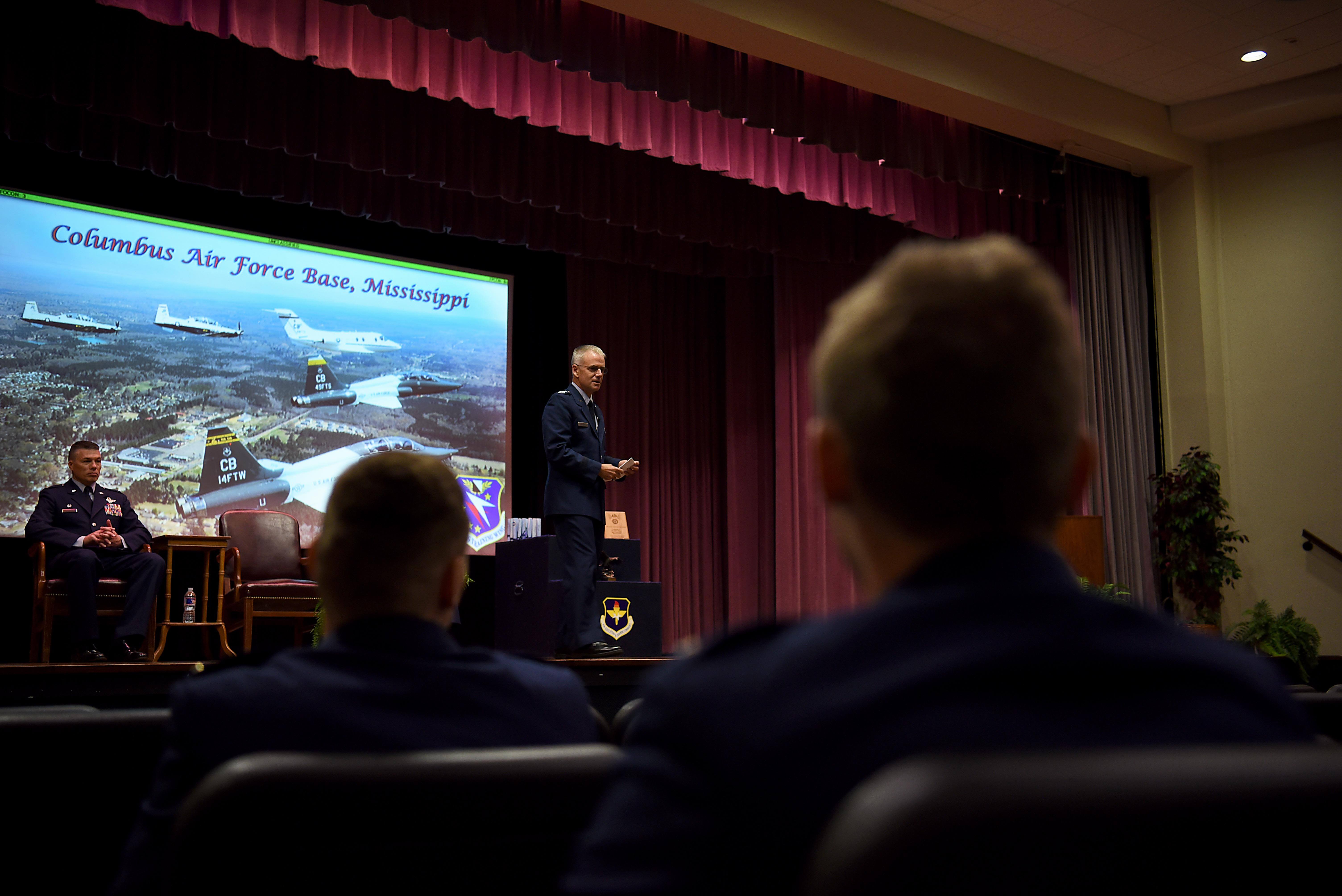USAFA supt speaks to pilot training graduates at Columbus Air Force Base

COLUMBUS AIR FORCE BASE, Miss. — The Air Force Academy superintendent spoke to new pilots during a June 29 stopover at Columbus Air Force Base, Mississippi.
Lieutenant Gen. Jay Silveria was the guest speaker at a graduation ceremony that day for pilots who completed Specialized Undergraduate Pilot Training.
“As the Air Force Academy superintendent, I’m responsible for turning the 18-year olds’ ultimately into lieutenants,” he said to the 20 graduates. “It’s so exciting to be here today to see what these lieutenants become.”
Silveria is a command pilot with more than 3,900 hours in a variety of aircraft, including fighter jets and helicopters. He was assigned instructor-pilot duties twice in his career, first at the now-defunct William Air Force Base near Phoenix and at Seymour Johnson AFB, North Carolina. He told the graduates he didn’t want these assignments — at first.
“The lesson I learned was ‘That’s what the Air Force needed’ and I needed to be the best ‘fill in the blank I could be,’” he said. “If they needed an instructor pilot, I’d be the best instructor I could be.”
Silveria told the group that he cherishes memories of his time as an instructor pilot.
“The chance to be with the kind of people who want to serve, who want to work hard, who want have an impact, who care about what they’re doing? I can’t imagine doing anything with anyone else,” he said.
Specialized Undergraduate Pilot Training
According to the Columbus Air Force Base website:
— In the primary phase of training, students fly the T-6 trainer aircraft, learning basic aircraft control, takeoff, landing techniques and aerobatics. Students learn to use aircraft instruments to fly and navigate in all types of weather to different locations.
— Following the T-6 phase of training, students enter track-specific training depending on the type aircraft their selected to fly: T-38 Talon aircraft for those bound for fighter and bomber aircraft, or the T-1A Jayhawk aircraft for tanker and airlift pilots.
— Student s selected to fly helicopters are trained at Fort Rucker, Alabama
— To earn Air Force wings, each student flies nearly 200 hours during a 54-week period. Paralleling flying training, students complete 400 hours of flight-related classroom instruction.
— Students entering training at Columbus average 475 officers a year
Visit www.columbus.af.mil for more information about pilot training)
(U.S. Air Force Academy Public Affairs staff contributed to this report)